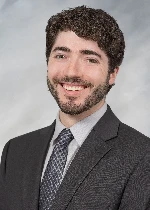3271 - High Rates of Treatment Regret and Recurrence with Focal Radiation Therapy: Long-Term Follow-up of a Pilot Trial for Intermediate-Risk Prostate Cancer
Presenter(s)

S. Lichtman-Mikol1, E. T. Fredman1,2, E. T. D. O. Correia3, L. K. Bittencourt3, N. G. Zaorsky1, R. Zuhour4, K. V. Chaung1, J. E. Shoag5, L. Ponsky5, R. J. Ellis III1,6, D. E. Spratt1, and A. Y. Jia1; 1Department of Radiation Oncology, University Hospitals Seidman Cancer Center, Case Western Reserve University, Cleveland, OH, 2Davidoff Cancer Center, Rabin Medical Center, Petah Tikva, Israel, 3Department of Radiology, University Hospitals Cleveland Medical Center, Cleveland, OH, 4Department of Radiation Oncology, University Hospitals Cleveland Medical Center/ Seidman Cancer Center, Cleveland, OH, 5Department of Urology, University Hospitals Seidman Cancer Center, Case Western Reserve University, Cleveland, OH, 6University of South Florida, Tampa, FL
Purpose/Objective(s): Use of focal therapy has increased despite it being a non-guideline supported approach that is largely not approved by the FDA for the treatment of prostate cancer. There are many forms of focal ablative therapy, stereotactic body radiotherapy (SBRT) being the least invasive. We previously reported the initial results from our pilot trial of focal SBRT, and here we report the long-term outcomes after MR-defined focal SBRT for intermediate-risk prostate cancer.
Materials/Methods: From 2016-2020, five patients were enrolled and eligible for focal SBRT in a prospective trial (NCT02163317). Eligibility included a =5 mm focal dominant lesion confirmed with imaging and positive prostate biopsy, clinical stage T1c/T2aN0M0, Gleason score =7 (3+4), and with a PSA =10 ng/mL. Notably, a second systematic and targeted biopsy was required to confirm localized disease. Of 12 patients initially considered to be eligible based on preliminary criteria, only five met the confirmatory biopsy requirements. SBRT was given to a dose of 29.25 Gy in 3 fractions to the involved region of the prostate. None of the patients received ADT with initial treatment. Patients underwent routine imaging with pelvic MRIs. Patients were followed until 2/21/2025 to assess outcomes, salvage treatment, and treatment regret using a standardized questionnaire based on the Prostate Cancer Outcomes Study, a 4-question Likert scale (1-5 per question, maximum score of 20), with higher scores indicating greater regret.
Results: Among the five patients who underwent focal SBRT, one was lost to follow up due to non-related medical comorbidities. Median follow up time was 70.7 months (range 47.3 - 103.9). Of the four evaluable patients, three recurred with a median time to biochemical recurrence (BCR) by Phoenix criteria (nadir + 2 ng/mL) of 54.6 months. All recurrences included a local component and were biopsy-confirmed. Two had intra-prostatic recurrence in the contralateral non-irradiated gland, and one had both intra-prostatic (ipsilateral) and nodal recurrence. All three patients underwent salvage RT (median 60.3 months post-initial RT). One of the three patients with recurrent disease has had a subsequent recurrence after two rounds of partial gland SBRT. Grade 1-2 acute GU toxicity occurred in all patients with re-RT. All three patients reported regret, with a median total score of 19 (range: 18–20).
Conclusion: While focal SBRT is feasible and well-tolerated, 75% of evaluable patients with long-term follow-up recurred and there is substantial treatment regret. Of those who recurred, only 66% were successfully salvaged. Due to high rates of tumor control and low morbidity of whole gland SBRT from randomized trials, all forms of focal therapy should not be used outside the confines of a prospective, ideally randomized, clinical trial.
